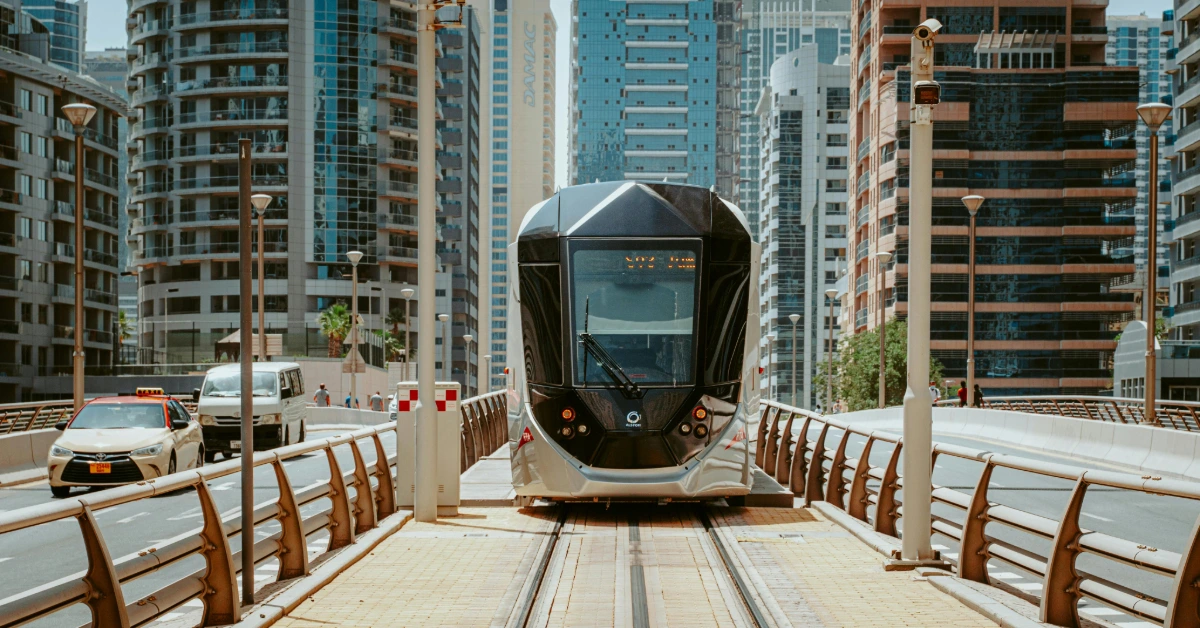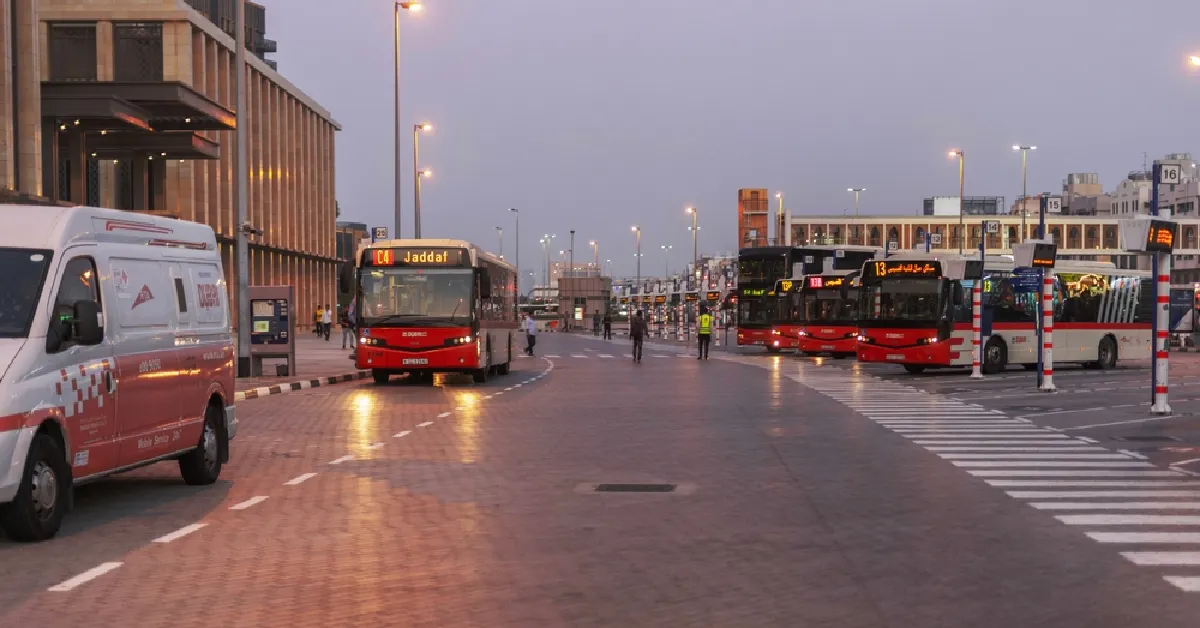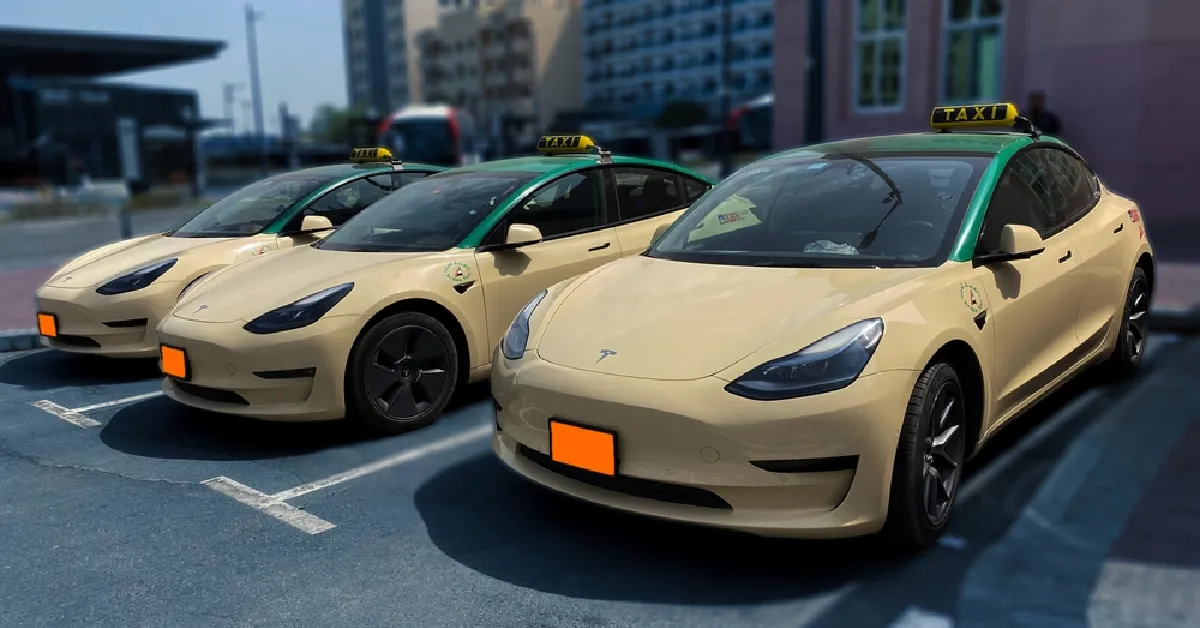Travelling around the UAE predominantly comes down to two main choices: driving or using public transport. Upon comparing public transport vs private transport, you will see that both have their pros and cons. The top factors that can help you decide are your lifestyle and family size. Your budget also plays a key role. Dubai has an advanced public transport system. In Abu Dhabi and Sharjah, public transport comprises buses and taxis. However, in the other emirates, the network is limited.
- Public transportation in the UAE
- Private driving in UAE
- Cost comparison table: Public Transport vs Private Transport
- Decision factors: Public Transport vs Private Transport
- Key takeaways
- FAQs
- Conclusion
Public transportation in the UAE
Tourists and residents both have different needs. For some, a Nol card suffices. However, for others, owning a car is inevitable. Whether it’s down to cost, convenience or lifestyle, there are plenty of options to choose from to determine which suits you best.

Main options by Emirates
Each Emirate has a different offering when it comes to getting around, from Dubai’s metro lines to Abu Dhabi’s bus system.
Dubai
Dubai stands out in its public transportation network. The metro connects prominent districts, from the airport to Jebel Ali.
Stations link smoothly to water taxis, trams, and buses. Nol cards allow seamless payments across all transportation modes. Taxis are prevalent. Careem and Uber are good if you enjoy ride-hailing services.
Abu Dhabi
Metro here is still under construction. However, the buses are the most viable option for travelling in the capital city. Buses here offer an expansive network. They are well air-conditioned. Buses take you to most parts of the city.
The public taxis are well-regulated. They are reliable. Abu Dhabi also has several ride-hailing apps. However, these are mostly costlier than the government taxis.
Sharjah
Buses and taxis dominate the transport system in Sharjah. The emirate maintains a robust intercity bus link with Dubai. These rides are cheap. However, during the peak times, they may be crowded.
Uber and Careem are readily available. But they are not as reliable as in Dubai or Abu Dhabi.
Other emirates
The four emirates, Ajman, Ras Al Khaimah, Fujairah, and Umm Al Quwain, provide fewer options. They have several intercity buses. These connect them to larger cities. However, for the local trips, people generally prefer taxis.
Public transportation is limited in these emirates. Upon comparing the convenience of public transport vs private transport, it is generally better to have a car in these emirates. It will facilitate an easy commute.
Cost breakdown for public transport

- Metro: Tickets cost anywhere between 3 AED and 40 AED per journey. It depends on the card you have. Distance travelled is another obvious factor that influences the price. A monthly pass costs around 300 AED.
- Local buses: For local travel, the fare usually starts at 2 AED. However, it can go up to 8 AED. You can also find inter-emirate buses. These cost around 25 AED. There is an option to take the bus to the metro station. In this case, the bus travel is free. However, you will have to punch in your Nol card for this. Students and senior citizens get special discounts. However, for this, they will need an ID. For instance, in Dubai, they can purchase the Nol blue card. This is a discounted card and becomes an automatic proof.
- Taxis: The fares vary from one emirate to another. However, the price is the highest in Dubai. Depending on the distance, you can expect to pay between 12 AED and 50 AED for a short ride. Airport taxis, however, are costlier. Surcharges also apply at night. It adds to the cost.
- Ride-hailing apps: Careem and Uber typically cost similar to or sometimes more than standard taxis.
- Water taxis and trams: Fares are typically under 11 AED for every trip.
- Typical monthly spend: For a single person, the monthly spend may be around 500 AED. However, for a family, the expense could be as high as 2,500 AED.
Advantages of public transport
- Affordable: The price of daily travel is certainly much less than owning a car. For singles, students, and short-term visitors, this is an ideal arrangement.
- No headache for parking: Riders do not have to worry about finding a space, paying a fee, or stressing about Salik tolls.
- Modern fleets: Metros, trams, and buses are air-conditioned. Many of them have family-only and women-only spaces. This adds to the safety and security. These transportation modes also offer several digital services for convenience.
- Eco-friendly: Comparing public transport vs private transport, you will see that the former is better for the environment. It can cut congestion on the city streets. Moreover, these transportation modes also reduce carbon emissions.
- Safe and regulated: Taxis are metered. Services are governed under strict laws. Moreover, stations have CCTV.
- Tourist-friendly: Travel is easy with clear signage. English-speaking staff make it easier to communicate and share details. Additionally, passes like Nol make travel more affordable.
Cons of public transport
- Limited coverage: While strongest in Dubai, networks are weaker in smaller emirates.
- Last-mile dilemma: Some trips still need a taxi or a lengthy walk.
- Less family-friendly: Managing kids, groceries, or school runs on the bus is quite daunting.
- Heavy crowds at peak times: Rush-hour travel can be an uncomfortable experience.
Private driving in UAE

Cost breakdown of driving
- Car Purchase: Mid-range sedans cost around 50,000–1,00,000 AED. Luxury cars go way above that.
- Fuel: Petrol costs around 3 AED per litre in 2025. This is one of the cheapest in the world.
- Insurance: The insurance cost depends on the car type. Driver history also influences the insurance amount you pay. However, annual premiums are not cheap.
- Registration: You need an annual registration. It will cost a few hundred dirhams.
- Maintenance: Servicing, buying tyres, and repairs can easily amount to thousands of dirhams annually.
- Parking: Parking is often free at shopping malls. On public holidays, too, the parking is free. However, typically, parking is governed by the local transport authorities. It varies in each emirate. The fee depends on the type of parking and the geographical area. Parking is charged mostly on an hourly basis.
- Toll fees (Salik): Every passage costs 4 AED per crossing in the off-peak times. However, the amount is 6 AED during peak hours.
Pros of driving
- Flexible: Cars give you ultimate flexibility. You can go anywhere, anytime, without any fixed schedules.
- Family-friendly: Cars make it easy to carry shopping bags, strollers, or school bags without stress. Thus, they are better for families.
- Ideal for long commutes: Cars are a better option when travelling inter-emirates or in suburban routes with limited transit.
- Cheap fuel: Petrol prices are quite low when compared to global standards. This helps cut down the cost per kilometre spent on driving.
- Comfort: Cars assure privacy and climate control. They also give you your personal space.
The Drawbacks of driving
- Upfront expenses: Buying or leasing a vehicle is a big-time investment.
- Recurring expenses: You pay yearly insurance, registration, and maintenance costs.
- Traffic: In Dubai and Abu Dhabi, rush hour results in usual traffic delays. You can avoid this when travelling via the metros.
- Parking: Central areas are exorbitantly priced. They also have limited space.
- Environmental factor: In comparison to public transport, the private vehicle releases more emissions.
- License: To drive your car, you need a driving license. For instance, you will need an Abu Dhabi driving license to drive around the city. There’s no such requirement for public transportation.
Cost comparison table: Public Transport vs Private Transport
| Aspect | Public transport | Private transport |
|---|---|---|
| Initial setup | Nol card or tickets (minimal cost) | Car purchase or deposit (large investment) |
| Monthly costs | 500 AED | Fuel, insurance, servicing, plus parking and tolls (variable, often higher) |
| Convenience | Excellent in metro zones, weaker outside | Maximum flexibility, door-to-door access |
| Family suitability | Less practical for families | Ideal for families juggling school runs and shopping |
| Environmental impact | Lower emissions, sustainable | Higher emissions, less eco-friendly |
Decision factors: Public Transport vs Private Transport
Still “umming” and “ahhing” about your choice of transport? Here are a few things to consider.
When public transport is a better choice
Public transport is a good option for expats, students, and tourists. It works well on predictable routes around Dubai and Abu Dhabi. If your top priority is saving more money, get yourself an Nol card or a monthly bus pass.
When driving is a better choice
This mode of travel is helpful for families and individuals residing in suburban areas. It may also be an ideal choice for those who have irregular schedules. People who undertake cross-emirate commutes should also prefer driving over public transport. Flexibility overpowers cost when convenience and time-saving are a priority.
Additional consideration
- Many residents combine both systems. They drive to the metro station and then hop on a train to the downtown districts. At points where public transport does not reach, taxis or Ubers offer the last-mile leg.
- Some communities and workplaces offer shuttle bus services. These reduce commute costs.
- In the times to come, you will see Abu Dhabi’s expanded bus network and metro links to connect different emirates.
Key takeaways
Public transportation is cheap, reliable, and eco-friendly. It works well in the big cities but less so in the smaller emirates. For families and suburban residents, driving may be a more logical alternative despite the higher costs incurred.
Both systems reflect the new infrastructure of the UAE. A majority find that a hybrid approach—where one might merge the use of public transport with some amount of driving—works best in terms of cost and comfort.
FAQs
No, you will find comprehensive networks primarily in Sharjah, Abu Dhabi, and Dubai. For other emirates, you will have to rely on taxis and buses for intercity travel.
You will have to bear an expense of around 300 AED for most metro or bus commutes in the top UAE emirates.
Yes, public transportation in the UAE should be a top choice for tourists. It is a more affordable option.
Essentially, yes. While fuel is cheap, you will have to bear costs like:
– Annual registration
– Parking fee
– Insurance
– Maintenance charge
While ride-hailing apps are convenient, they are more expensive for everyday travel. Though practical, they should be an occasional choice to not dent your budget.
Conclusion
Selecting from UAE public transport vs private transport depends on your lifestyle and priorities.
As a budget-conscious commuter or tourist in Dubai or Abu Dhabi, public transport fits just right. Driving is more suitable for families and suburban residents. Those undertaking frequent long trips should also consider private driving.
The transport infrastructure of the UAE is reliable. For many, a wiser choice is a hybrid approach.